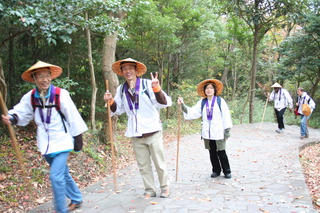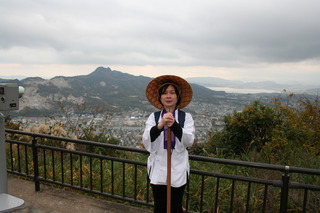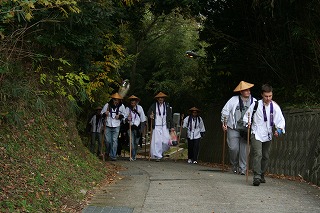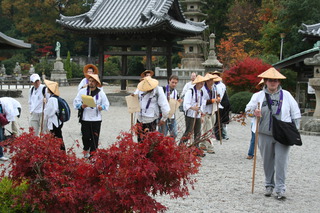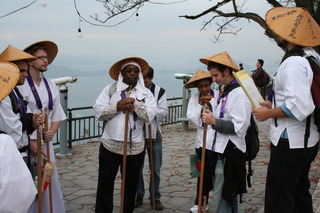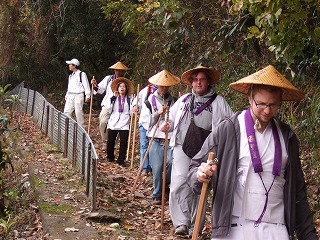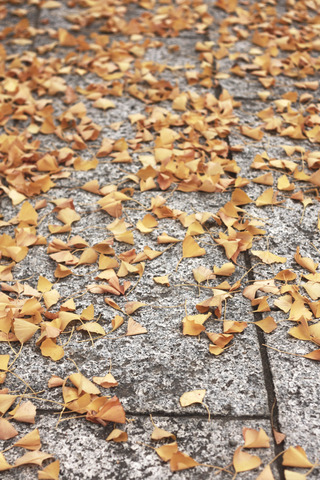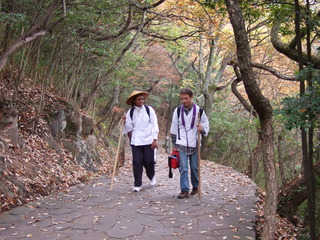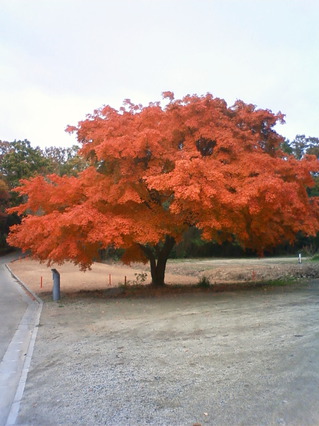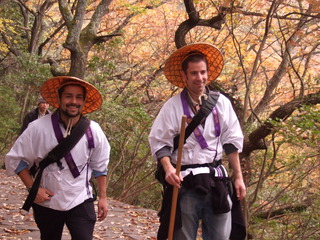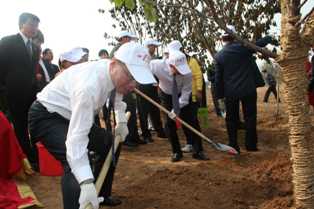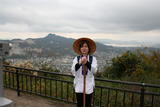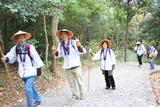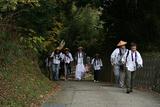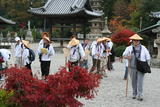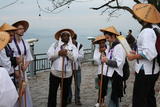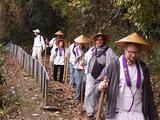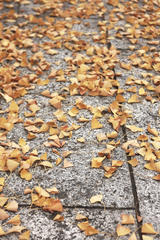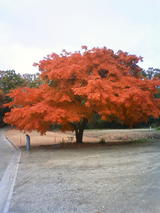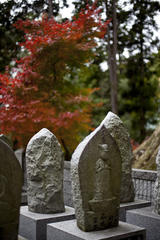28November2009:The 4th Shikoku 88-Temple Circuit Experience
Under an invigorating autumn climate, donned our pilgrim white jackets and with walking sticks in hands on which was engraved " walking with Kukai"and at upper end of which was tied a small bronze bell, I started my first Henro experience which I have expected for long time.
I have known the Henro since I came to Kagawa from Xi'an, China this June. The Henro originates from a beautiful legend of Kukai, who was born in Kagawa. About 1200 years ago, Kukai went through untold hardships to Chang'an City (named Xi'an now), China from Japan and formally acknowledged Keika Daishi of Black Dragon Temple as his master to seek for the knowledge of Buddhism. After Kukai spent many years in China and returned to Japan, he used the rest of his life to write enormously influential works on Shingon Buddhism, establish a monastery community on Mount Koya and gave full play to Shingon Buddhism.
But Kukai had never to preach the Shingon Buddhism in his birthplace on the island of Shikoku after he returned to Japan. This place still had a strong appeal to Kukai. So he wandered this beautiful island, spreading Shingon Buddhism by visiting established temples and founding new ones in total of 88 temples. The pilgrim were told that Kukai's spirit could still be found traveling on the circuit. So no pilgrim would be alone because you are walking with Kukai. This is Henro!
Whatever this legend is true or not, I was on the Henro now. Along the Kukai's footmark, I had set out from Black Dragon Temple in Xi'an and reached Kagawa. Then I walked on Henro with Kukai. It was so magical!
Kagawa in later autumn was so beautiful. In the early morning, Yashima Temple hiding in the red autumnal leaves looked very holy. Wandering along the meandering mountain road which led us to Yashima Temple, I seemed to hear the jingling as pieces of metal dangled from Kukai's staff which resounded in whole valley. I knew it must be Kukai accompanying with me. On the top of Yashima, overlooking the distant place, I had a panoramic view of Kagawa. The poetic and artistic conception couldn't help generating in my mind. So I quickly wrote a Chinese poem at that time to convey my strong feeling about henro:
同行二人
Walking with Kukai
屋岛洲崎八栗寺,
Yashima, Suzakiji, Yakuriji Temple
清晨红叶二人行。
The earlier morning,the the red leaves,walking two.
凭倚石栏忆今昔,
Leaning on the rock railing and recalling the present and the past,
空海弘法遍路情。
Kukai, Kobo and the sentiment of Henro
Leaving Yashima Temple, patting the white jacket to get the dust off, righting the conical hat on my head, grasping the walking stick more tightly in my hand, I started again to walk toward to Yakuriji Temple with firm strides. The sunshine of later autumn was warmer and the wind was softer. The Mount Gokenzan(Five Swords Mount) lay in not far place ahead. It seemed to spread its five fingers to welcome me. The facing road led me going on and going on...
Zhang Rui
